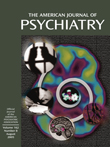Dr. Cutler and Colleagues Reply
To the Editor: We are pleased to see continuing interest in psychotherapies among readers of the Journal.
In response to the comments of Drs. Sareen and Skakum on the use of transference in cognitive behavior therapy, we agree that cognitive behavior therapists can productively explore the influence of early relationships on patients’ core beliefs and the impact of these core beliefs on the cognitive and affective processing of interactions with the therapist. In fact, our cognitive behavior therapy formulation provides several examples in which the patient’s experience of interactions with the therapist and the association of this experience to his longstanding core beliefs might enter into the work of treatment. Therapists of different orientations may use similar concepts and even similar techniques in service of very different interventions. Yet despite the frequent usefulness of extending cognitive work to the therapist-patient relationship, we believe the writers’ claim that “transference issues…must be an integral component of the complete management of every patient undergoing cognitive behavior therapy” overstates the case. For example, the focus of treatment for a patient participating in short-term cognitive behavior therapy for panic disorder would likely be on the patient’s interpretation of somatic states, and the patient’s relationship with the therapist might never enter into the foreground of treatment. All therapists should heed the transference, but not all may interpret it. Nonetheless, Drs. Sareen and Skakum’s comments usefully underscore the importance of the therapeutic relationship across treatment approaches and the usefulness of comparing how different psychotherapies manage it.
We disagree with Dr. Beitman’s contention that “the schools of therapy are illusory.” Common factors are important, patient and therapist factors count, but meaningful differences exist among psychotherapeutic approaches, as any good therapist knows. Although these differences may not always matter, they often may. We agree that all psychotherapeutic treatments involve the power of the interaction, implicitly the transference to authority, unconscious communications, and the wish for relief. Technique in practice is always flexible; for example, every effective psychodynamic treatment involves varied noninterpretive interventions that deepen the process and reveal resistances. Constructs like common factors and patient variables require greater precision and more research. The three psychotherapies our case conference described would not necessarily have yielded identical results. Process research can disentangle the useful from the extraneous in particular therapies, but only within the context of outcome research of defined psychotherapies; i.e., which processes may mediate treatment outcomes. Process research does not currently support the conclusion that no significant differences exist among various psychotherapies. Nor should Dr. Beitman’s letter validate muddy eclecticism. Research may helpfully explore aspects of psychotherapy from neurobiological, process, and outcome vantage points, but it is surely premature to say that we should abandon 55% of our expectations to every patient’s characteristics or that we can yet diagram the neurobiology of countertransference. We join Dr. Beitman in looking forward to the day when such a diagram may be possible.



